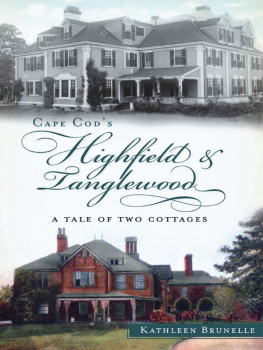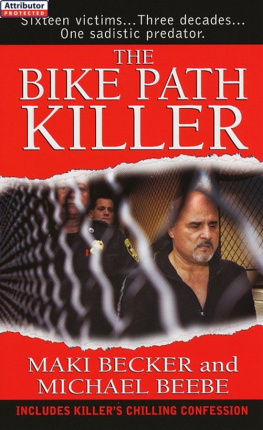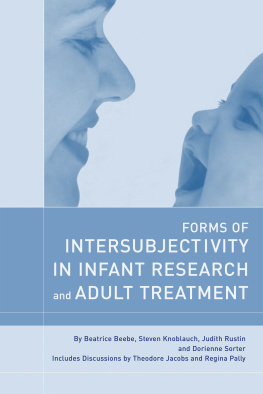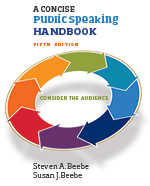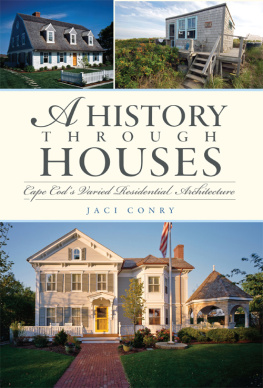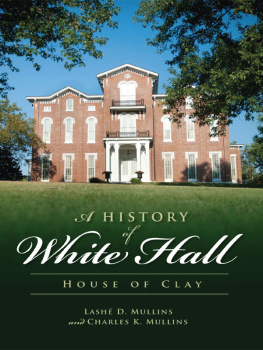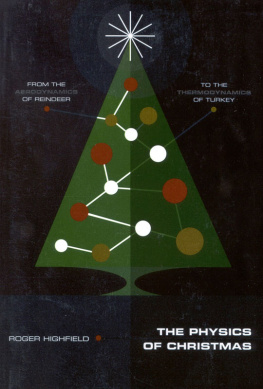

Published by The History Press
Charleston, SC 29403
www.historypress.net
Copyright 2012 by Kathleen Brunelle
All rights reserved
Front cover: Images of Highfield and Tanglewood. Courtesy of Mike Crew.
First published 2012
e-book edition 2012
Manufactured in the United States
ISBN 978.1.61423.740.2
Library of Congress CIP data applied for.
print ISBN 978.1.60949.791.0
Notice: The information in this book is true and complete to the best of our knowledge. It is offered without guarantee on the part of the author or The History Press. The author and The History Press disclaim all liability in connection with the use of this book.
All rights reserved. No part of this book may be reproduced or transmitted in any form whatsoever without prior written permission from the publisher except in the case of brief quotations embodied in critical articles and reviews.
To my grandparents, George and Charlotte McCarthy, who came to the hill in 1960 to care for Highfield and Tanglewood.
And to my new daughter, Mariel, may she grow to love the Cape as much as her mother.
CONTENTS
ACKNOWLEDGEMENTS
I would like to thank the following people without whom this book would not have been possible. I would like to thank my husband, Robert, for his support through the writing process and my son, Baylen, for his never-ending patience, kindness and understanding. I would also like to thank Barbara Milligan, the director at Highfield Hall, for allowing me to access the archives and for answering my many emails; Janet Totten, for always making time and a place for me to research; Bill Hough, the editor of the Falmouth Enterprise, for opening up the archives, allowing me to use material, answering my emails and treating me like family; John Hough, for his beautiful memories of the hill and my grandparents; Bob Haslun, for taking the time to answer my many questions; Mary Sicchio of the Falmouth Historical Society for allowing me to use the Reverend Smythe letters; the Massachusetts Historical Society; Harvard University Archives; Hal Morgan for the beautiful photograph; the Rentz family for sharing their memories; Fred Wallace for sharing his research on Charles Philip Beebe; Richard Noble, the school historian at St. Marks, for the information on Arthur Appleton Beebe; the Frederick News Post for allowing me to use photographs and information; Susan Shephard for her wonderful interview and resources; Maximilian Ferro for allowing me to use his report and for responding to my questions; Isa Schaff, the historian at the Noble and Greenough School, for finding the fabulous old photo of Charles P. Beebe; the Stanford University Archives Staff for sending documents so quickly and for allowing me to use materials in this book; Joan Hester, for her tip on old photographs; Mike Crew, for allowing me to use his great old photos of Falmouth; my mother, my Aunt Kathy and my Aunt Barbara for sharing their stories and photographs from their days at Highfield; and Megan Hamilton McKeon for listening to my endless research and providing support for this project.
I would especially like to thank the TerHeun family. They have been so generous, and they have gone out of their way to share personal and detailed stories. I truly could not have completed this book without the help of Elizabeth Totten Looney and Pat TerHeun. Thank you for the emails, phone conversations and support!
INTRODUCTION
When I was a young girl growing up on Cape Cod in the 1980s, my family would take trips to Rhode Island to visit my aunt and uncle. I remember examining the books encased within my aunt Kathys off-white bookshelves. Situated on either side of the back window in her living room, the shelves held an array of books and picture frames. Among the histories and photo albums sat a green hardcover book with gold lettering and an odd title: Ring Around the Punch Bowl. I envisioned a crystal bowl filled with strawberries and ginger ale. I never did understand the reference to a ring, other than the fact that every time I looked at the title my mind replayed the childhood rhyme Ring Around the Rosy over and over in my head.
While I did not dare disturb the green book with the fancy gold lettering, I often wondered what information lay hidden within its pages. Little did I know that its subject was the same subject I had often heard spoken of by my family: Highfield. My mother moved to Falmouth in the fall of 1960 when she was just five years old. For nearly a decade, she and her family lived on the hill, as we say, in a house situated next to both the Highfield and Tanglewood mansions built there the century before.
My childhood was full of stories of the Highfield Theater, stories of sleepovers at the palatial and mysterious Highfield Hall and stories of treks through the woods to the deep pond that I eventually came to realize was the Punch Bowl alluded to on my aunts bookshelf. Like most children born in Falmouth, I, too, came to know Highfield and its surrounding buildings.
At the age of five, I began my violin lessons at the conservatory. By middle school, I took curling lessons with my Girl Scout Troop at the Cape Cod Curling Club. By junior high school, I visited the thrift shop that my great-aunt Eleanor ran out of the first floor of Highfield. And by high school, I gathered with friends at the abandoned mansion and talked about my dreams and aspirations under the summer stars.

Punch Bowl. Photo by author.
Perhaps it was the ignorance or self-centeredness of my youth, but I never viewed the Beebe Woodsor Highfield for that matteras belonging to anyone. The area, much like the beaches that surround Falmouth, seemed to belong to all of us. I felt that the woods and buildings had always been there and would remain for my children and their children to explore and enjoy.
There are those in Falmouth who feel a disconnect concerning the Beebe family and their mansions on the hill, but the Beebe Woods and the surrounding buildings do not simply belong to the history of one wealthy Boston family; rather, the land that they preserved, the architecture they created and the cultural activities they promoted are a part of Falmouths historya part of our history.

Beebe Woods. Photo by author.
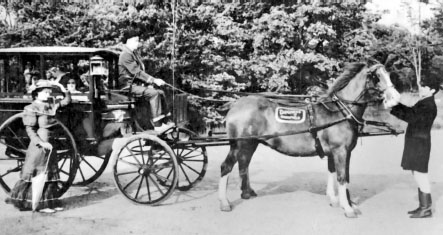
Highfield carriage. Courtesy of Mike Crew.
The purpose of my book is not to rewrite the events covered in Ring Around the Punchbowlthe classic text on my aunts bookshelffor George Moses wrote a well-researched and enduring classic. My purpose is to expand on some of the research he began, share additional stories and memories and celebrate the tract of land known as the Beebe Woods and the surrounding buildings as historical and significant features of Falmouths history and Falmouths story.
I begin with my own story and the day my grandparents first arrived at Highfield Hall.
Chapter 1
HURRICANE SEASON
On a Monday morning in the fall of 1960, my grandparents left New Bedford. George and Charlotte McCarthy packed up their belongings and four of their five childrenBarbara, thirteen; Kathleen, eight; Michael, seven; and Charlotte, fiveand said goodbye to the whaling city that had welcomed their grandparents from Ireland and the Azores.
Next page
